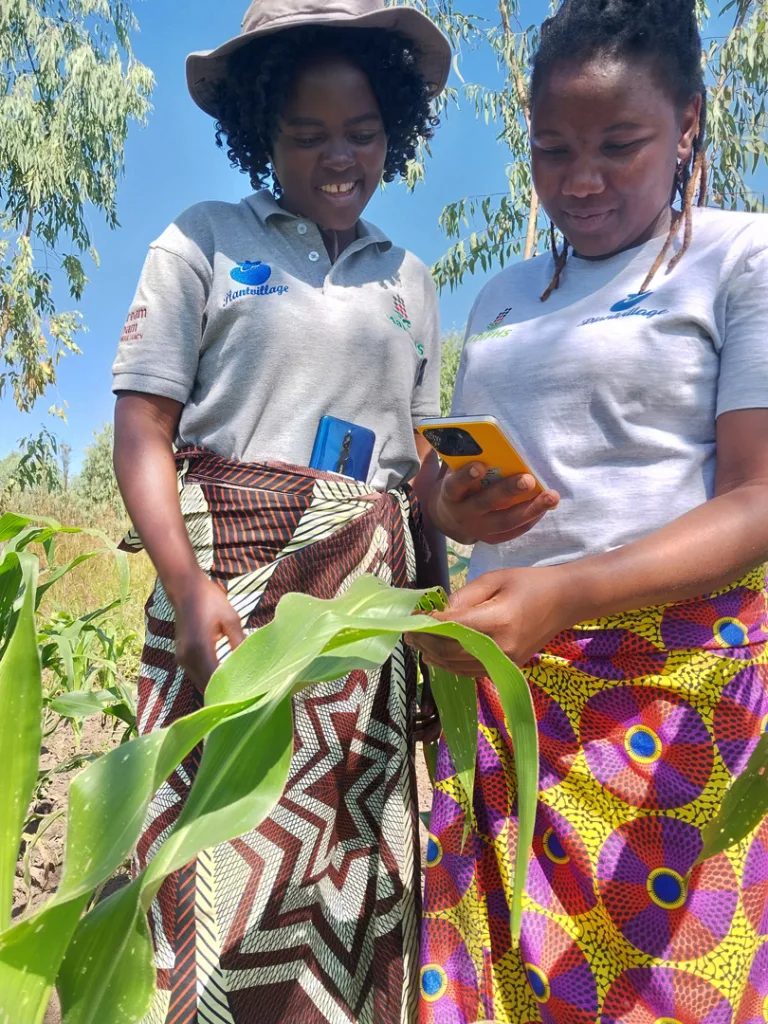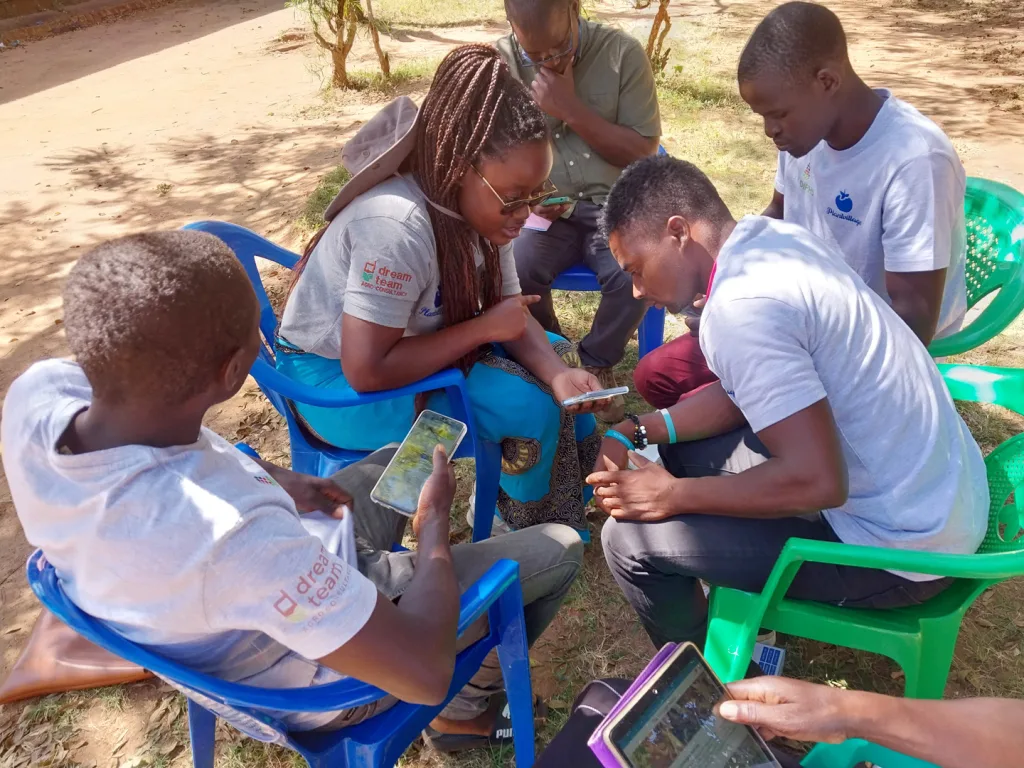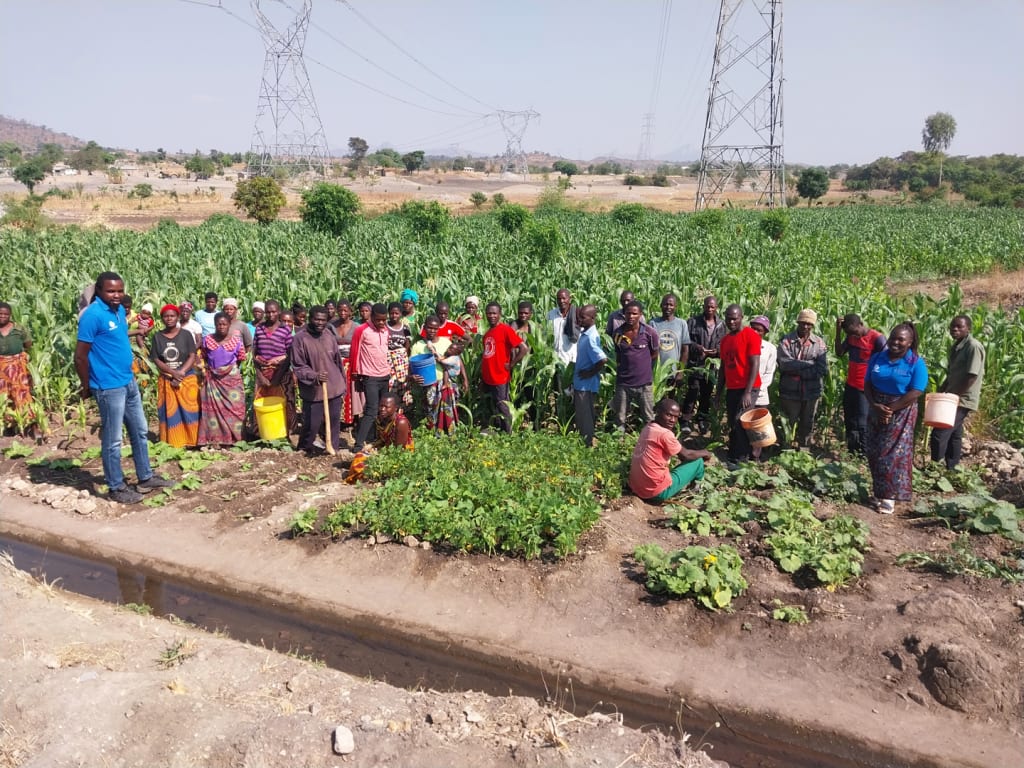Something was wrong with Edemanwan Eyo Bassey’s chickens. Their movements seemed slower, more lethargic, “like they were becoming paralyzed,” she said.
But as a new farmer in a remote part of southern Nigeria, she didn’t know where to turn. Her region has a shortage of extension agents (EAs), government workers who provide expert agricultural advice.
“I couldn’t get across to my EA,” said Eyo Bassey. “So I asked AI, ‘Why are my birds walking funny?’ ”
The AI assistant told her it could be a kind of Newcastle disease, a highly contagious viral infection that can cause paralysis and death in infected poultry. Hotter temperatures and heavier rains linked to climate change can leave poultry more vulnerable to the virus.
The tool told her to try the LaSota vaccine to prevent further spread. “I was able to give treatment to the birds and save them,” she said.
Farmers across the globe, including tens of thousands of African farmers, are increasingly turning to artificial intelligence to stay ahead of shifting weather patterns, respond to pests and diseases, and connect with buyers. For many, AI is an inexpensive lifeline as other lines of aid—including from the United States—dry up.
Since starting her farm two years ago, Eyo Bassey has asked Farmer.chat, an AI tool developed by the San Francisco nonprofit Digital Green, how to keep tiny flies called aphids off her pepper plants and which poultry breeds thrive in rainforest-rich Cross River State. The tool’s weather forecast helps her know when to heat her chicken coop. She poses questions in English, but the chatbot, which is used by more than 50,000 farmers across Africa, also responds to Hausa, an Indigenous language in Nigeria.
The last growing cycle was difficult for many poultry farmers, according to Eyo Bassey: About 100 birds died at a nearby farm, and many birds were underweight, including hers. But her Noiler chickens survived, which she attributes to their breed and her weather preparations.
“With the AI, I’ve been able to reduce the mortality rate of my birds,” she said.
AI has also expanded the reach of overstretched extension agents. For years, Veronica Igbana, director of extension services for Nigeria’s Benue State, struggled to keep up with farmers’ requests for in-person visits in Benue State, where the agent-to-farmer ratio is 1 to 23,000, she said. Since she started using Farmer.chat last year, she’s taught 170 people—farmers and both government and private sector extension agents—to use the tool themselves.
“They’re able to help reduce my workload,” Igbana said. “It gives me an opportunity to face other assignments.”
AI is far from a cure-all for agriculture in a changing climate. The hardware and software that drive the technology drain resources like water and electricity, rely on unsustainably mined minerals, and produce electronic waste. But AI is becoming critical for the officials making decisions that can determine farmers’ livelihoods, according to Catherine Nakalembe, a geospatial scientist at the University of Maryland and NASA.
By combining many different data sets—rainfall, temperature, soil moisture, vegetation conditions—AI can reveal why certain agricultural areas are underperforming and guide large-scale interventions, like investment in new irrigation infrastructure, pesticide spraying, or food aid.
Nakalembe, who is from Uganda and researches agriculture and food security in Africa, said these tools are most effective when they incorporate local knowledge and expertise. “If you co-develop an app with extension agents, you can further improve it. They give a lot of really good feedback about all sorts of things,” she said. “It’s supposed to help them do their job rather than replace them.”
Evolving digital tools help farmers adapt
AI chatbots have gained momentum among remote smallholder farmers and extension workers in the last two years, according to Eric Firnhaber, director of global communications at Digital Green. That growth has been fueled by advances in cloud computing that have enabled offline use, improved language access, and lowered costs.
Many tools, like Darli AI, a chatbot from the Ghana-based company Farmerline, are being developed in Africa. Other U.S. and European nonprofits collaborate with African farmers, extension agents, and researchers. Digital Green has offices in Kenya, Ethiopia, and Nigeria, and has been working on the ground with African farmers since 2008.
PlantVillage, an agricultural technology nonprofit at Penn State University that reaches about 15 million African farmers per season through various media channels, works closely with extension officers in Africa.
Creating tools in Africa is important, because a lot can go wrong when AI lacks local context, Nakalembe said. AI mapping platforms, for instance, often flub critical details, mistaking cacao crops for forest because the plant grows beneath trees, and rice fields for wetlands because they look similar from afar.
“If you zoom in, you start to see a whole bunch of issues, because the people who need to use it are not the ones developing it,” Nakalemebe said.
Those collaborations have been paying off. In 2020 and 2021, when locusts swarmed East Africa, eating everything in sight, the AI app eLocust3—developed by PlantVillage—collected farmers’ photos and GPS coordinates, fueling a geospatial system that predicted where the insects would travel next. That enabled targeted pesticide spraying that protected tens of millions of farmers’ livelihoods and $1.7 billion worth of crops, according to the U.N. Food and Agriculture Organization.

“It’s a landscape that’s changing on a daily basis, where we’re seeing cheaper, better models come out,” said Annalyse McCloskey, operations director for PlantVillage.
PlantVillage is testing several different large language models (LLMs) to improve its AI chatbot, Nuru. The bot can glean a lot from a photo of a farm, such as the crop stage of growth, and the farm’s soil type and tilling practices. It also pulls in satellite data on soil moisture and evapotranspiration—conditions affected by climate change.
“Farmers have traditionally relied on generational knowledge, but in the past 12,000 years of the agricultural era, we’ve never farmed under these conditions,” McCloskey said. “We need data to be coming in from the ground and then interpreted by scientists and AI to make predictions to better support farmers’ decisions.”

Justine Ong’ala, a 50-year-old farmer in Busia, in western Kenya, recently used the Plant Village app to identify cassava mosaic disease in her seedlings and save her crop; higher temperatures and rainfall shifts can promote whiteflies that spread the virus. Like Igbana in Nigeria, Ong’ala’s connection to PlantVillage has had a ripple effect: She’s helped over 300 neighboring farmers who don’t have smartphones, relaying feedback from the tool.
“It’s helping identify most of the diseases that are affecting them,” Ong’ala said.
But advocates say the recent suspension of nearly all U.S. foreign aid may hamper efforts to get these tools into farmers’ hands. PlantVillage had been working with local universities across 10 African countries to provide extension agents and farmers with access to its AI chatbot. USAID had previously pledged $39 million to the project, but with the aid freeze, “some of the networks absolutely fell apart,” McCloskey said. She said PlantVillage is now looking for new sources of funding.

Building a “path to wealth” with support from AI
Though AI can diagnose disease and ward off pests, advocates say that it can also be a powerful tool to train farmers in regenerative practices and connect them with markets.
These tools could be particularly potent on a continent with the world’s youngest population and 60% of its uncultivated arable land, said Farmerline CEO and founder Alloysius Attah. Farmerline’s app, Darli, responds to questions in 27 different languages, and farmers without smartphones can call or text an AI helpline. Attah said these tools demystify farming—for farmers and their investors alike.
“People used to see agriculture as risky, because you just couldn’t understand every single component of it,” Attah said.
Now, AI and financing platforms help farmers anticipate adverse conditions, such as drought, and better prepare—for instance, by allowing them to purchase irrigation systems in advance. That, in turn, will help them compete in the global economy, Attah shared.
“The path to creating wealth is to unleash opportunities, assets, access to information, access to finance,” Attah said. “The problem has never been farmers finding markets. It’s about the farmers being ready to meet the requirements of the market.”
Nexus Media News is an editorially independent publication of MEDA.


